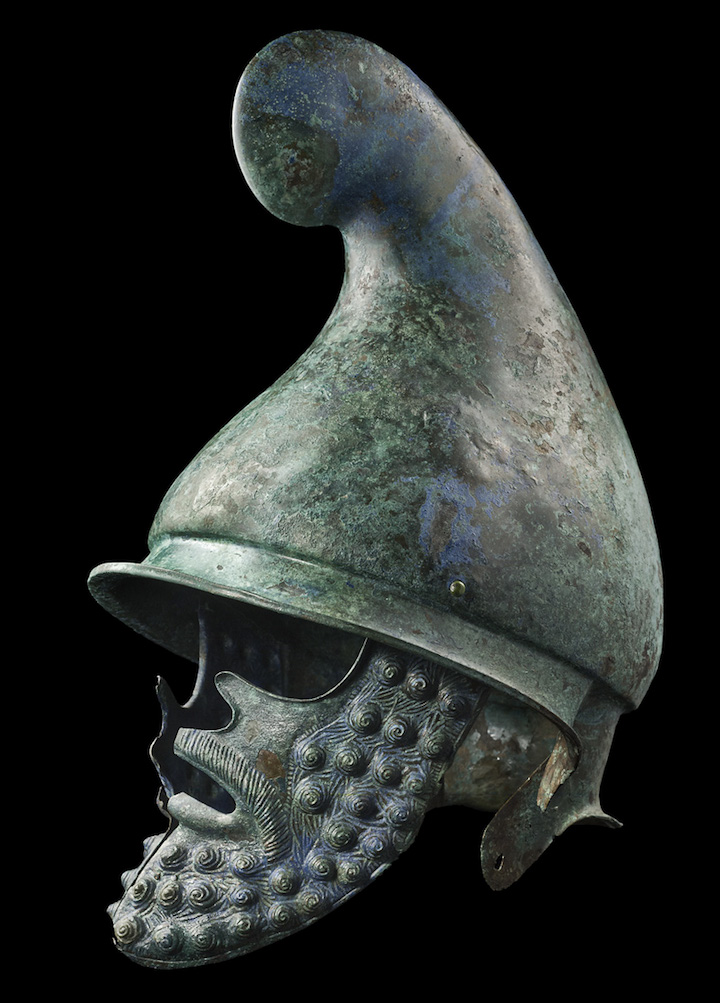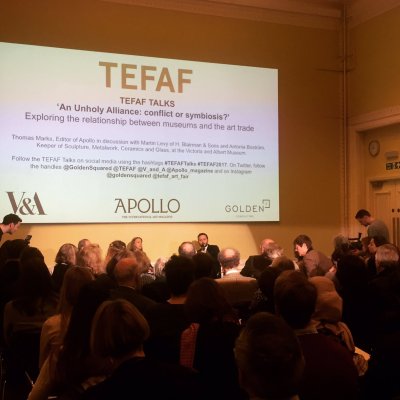Strong sales reported at TEFAF | Over the last week, thousands of collectors, museum curators and dealers have descended on the carpeted corridors and plush stands of TEFAF Maastricht (10–19 March). Deals appeared to be flowing almost as much as the champagne during the first hours of the fair’s preview, with the usual flurry of early sales reported. The renewed optimism coursing through the art market after a good start to the year was palpable, but after the first few days, some dealers noted that major sales had begun to trail off.
Unsurprisingly, the fair’s traditional heartland of Old Masters was where the big-hitting sales were found early on. Colnaghi started well, unveiling several deals in the first few hours of the fair. A 17th-century still life by Bartolomeo Cavarozzi, which had not been seen in public for over a century, sold with an asking price of €5m. The dealers also sold a rediscovered carved and polychrome wood sculpture of Saint Francis of Assisi by Pedro De Mena y Medrano within the opening 10 minutes of the fair for a seven-figure sum to a private European foundation.
The Antiques Trade Gazette reported that private buyers from a variety of European countries also snapped up four pictures – one for €500,000 – from Old Master dealer Derek Johns, two of which were early Netherlandish pictures.
Encouraged by the strong dollar, American collectors and institutions were also buying early on. Profiting from this was new exhibitor Salamon & C, whose depiction of the Doge’s Palace in Venice by Federico Moja sold for €85,000 to an American private collector.
Phrygian helmet, 4th century BC. Merrin Gallery at TEFAF Maastricht

Away from Old Masters, New York antiquities dealers Merrin Gallery had interest from three buyers for an exceptionally well-preserved 4th century BC Phrygian helmet, which sold to one for a six-figure sum. Meanwhile, John Endlich Antiquairs sold an early Dutch doll’s house containing nine rooms filled with 17th-century silver miniatures, Chinese porcelain and period Dutch pictures. It had an asking price of €1.8m and sold to a private American collector.
Doll’s House (1690–1710), the Netherlands and China. John Endlich Antiquairs at TEFAF Maastricht (asking price €1.8m)

Asia Week New York survives the snow | Asian art lovers braved the blizzards to attend (and spend at) Asia Week New York’s largest event to date. Around 50 international galleries and five auction houses – many defying the worst of the snow to remain open – have participated in the 10-day Asia fest which concludes on Saturday.
Christie’s 31-lot sale of Chinese Art from Japan’s Fujita Museum was the toast of the week, realising more than $262m – a record for any Asian Art Week series in auction history let alone a sale, the auction house said. The star lot, a 13th-century Six Dragons handscroll by Chen Rong, formerly in the collection of the Qianlong emperor, took $49m with six bidders vying for the work.
Contemporary records in London | The buoyant mood surrounding London’s impressionist and modernist sales carried through to the second week with £269.41m of post-war and contemporary art changing hands. Older artists dominated the price list, which was topped by Gerhard Richter’s Eisberg (1982), selling for £17.7m at Sotheby’s. It brings the final tally of London’s fortnight of sales to £640m – a record for a back-to-back series in the capital.
Eisberg (1982), Gerhard Richter. Sotheby’s London (£17.7m)

Christie’s South Kensington set to close | Shortly after taking part in this record-busting series, Christie’s announced the likely closure of its South Kensington saleroom and with it the potential loss of 250 jobs. Until the recent push for online-only sales, CSK had been a thriving focal point of the market in London and the mecca for a diverse range of lower-priced art and antiques. In her blog for Apollo, Susan Moore questions the wisdom of the closure, arguing that it looked like ‘corporate short-termism as well as hubris’.



